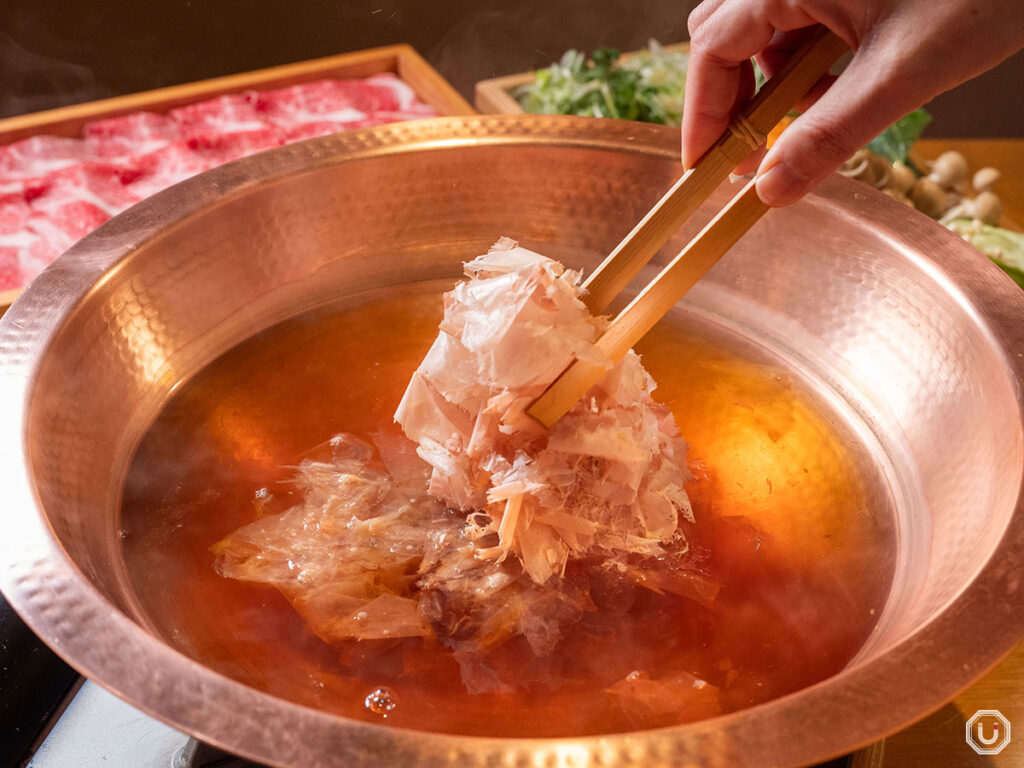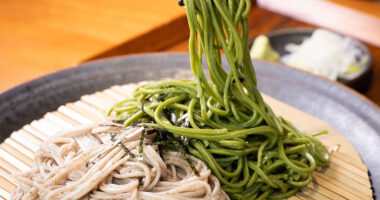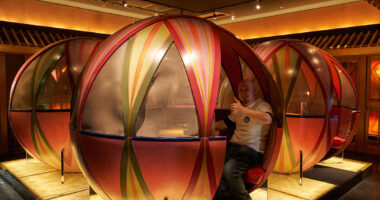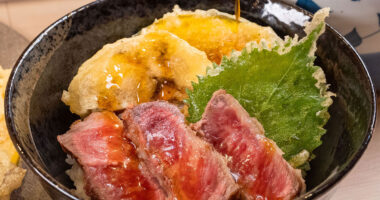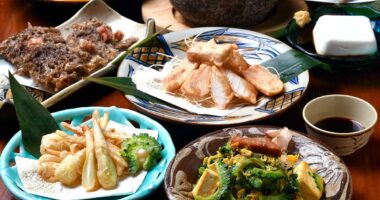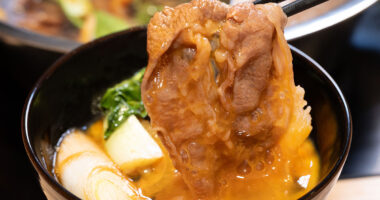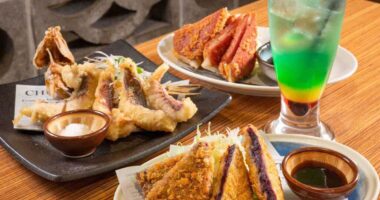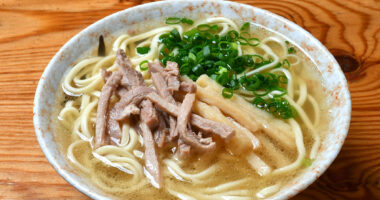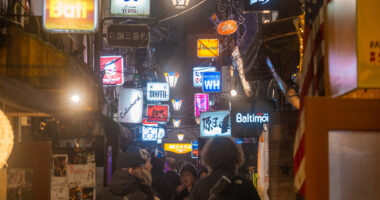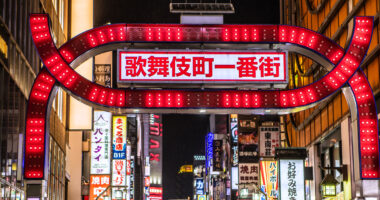Since early times, dashi broth has been an essential part of Japanese cuisine. In 2022, a dashi specialty shop opened in New York City, and now the ingredient continues to attract attention from around the world.
In order to better understand the allure of dashi, the Umami bites editorial team visited the restaurant “Okaka Shinjuku” located in Shinjuku, Tokyo.
At Okaka Shinjuku, diners can enjoy a number of dishes that highlight the flavor of dashi.
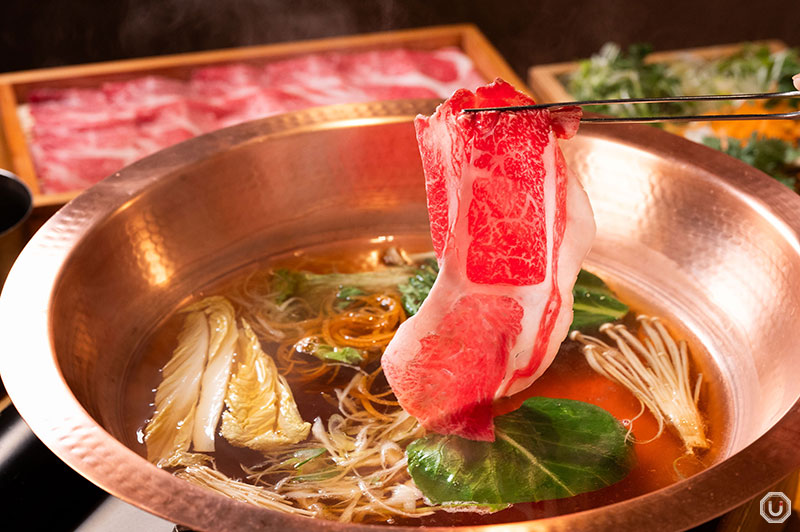
Fully savor the appeal of dashi with luxurious wagyu shabu-shabu
Okaka Shinjuku offers not only individual dishes, but also course meal options.
For our visit, we ordered the “Omakase (Kuroge Wagyu) Eight-Course Meal.” The course features Kuroge wagyū (a prized Japanese cattle breed also known as Japanese Black) as its main dish.
The popular course really allows you to appreciate the charm of dashi.
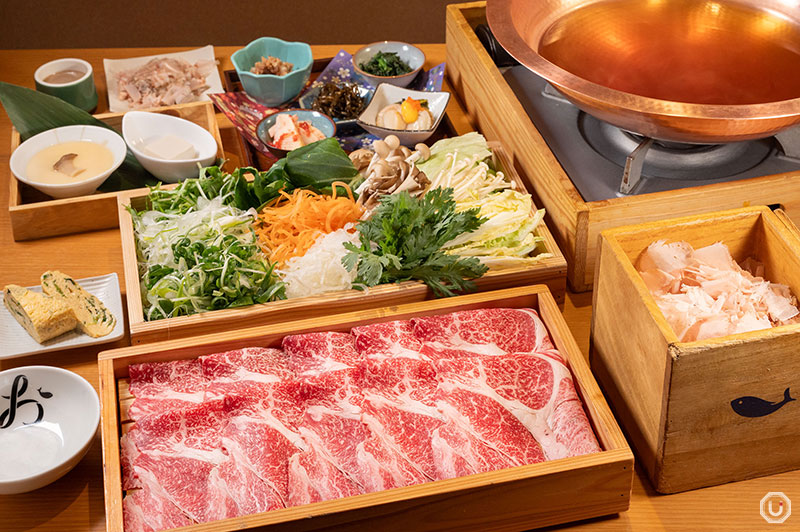
“おまかせコース≪黒毛和牛≫コースお料理八品,” Omakase (Kuroge Wagyu) Eight-Course Meal 7,000 JPY per person (tax included)
The broth served in the hot pot is made from an original dashi extracted from ingredients such as bonito, kombu (seaweed), and mackerel.
At Okaka Shinjuku, where dashi is given meticulous attention, they recommend first tasting the broth without adding anything to fully appreciate its flavor. The sweetness in the dashi comes from the combination of multiple ingredients, resulting in its rich depth.
After savoring the broth on its own, customers are encouraged to add freshly shaved bonito flakes provided in the restaurant.
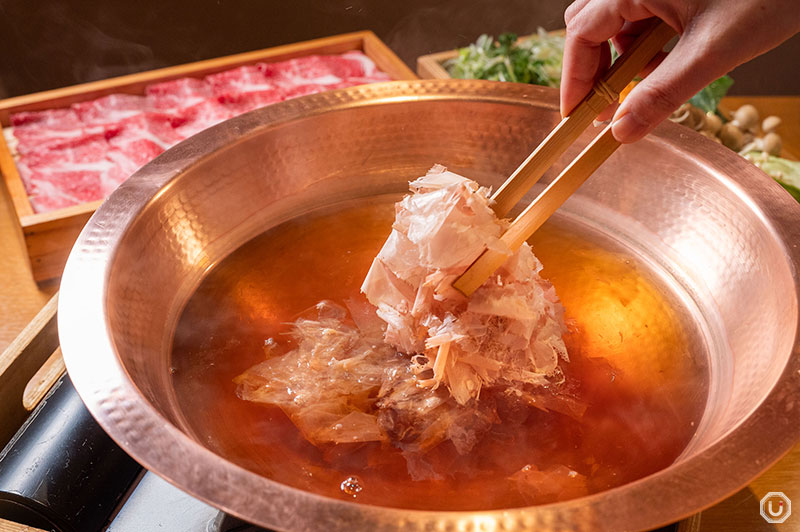
After adding the bonito flakes to the hot pot, let it sit for about 1-2 minutes to allow the umami and aroma to seep out and infuse into the broth.
Once you’ve scooped out the bonito flakes, taste the broth again. You’ll notice that the umami has intensified significantly, and there’s a richer aroma compared to when you tasted it initially.
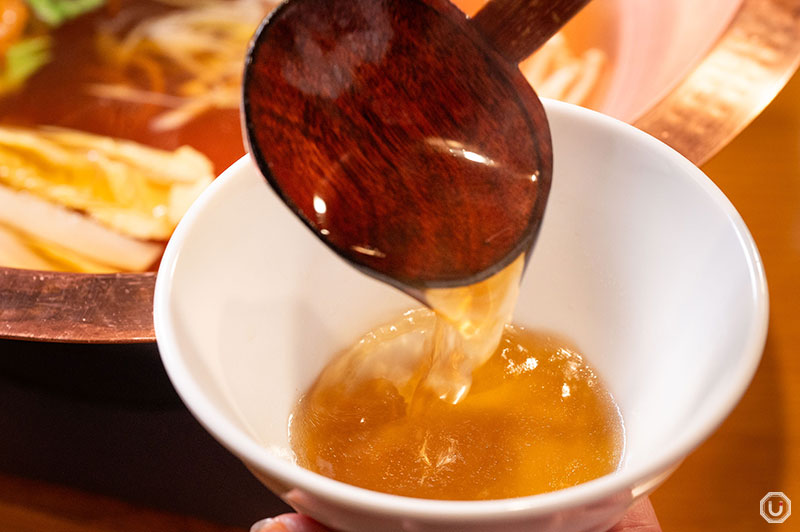
The secret to making the dashi even tastier lies in these bonito flakes that are added after.
Thinly shaved bonito flakes are considered to contain the best flavor, and at Okaka Shinjuku, they are shaved to an extreme thinness of 0.01mm.
Moreover, bonito flakes shaved to this thickness are so delicate that they practically melt on your tongue.
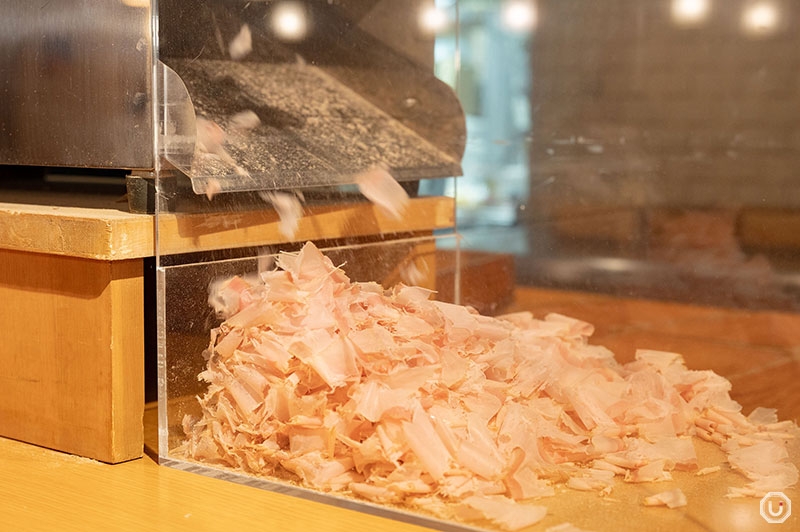
The broth, now rich with condensed umami, is complemented with fresh seasonal vegetables and carefully selected wagyu beef.
The wagyu beef boasts fine marbling and a tender texture.
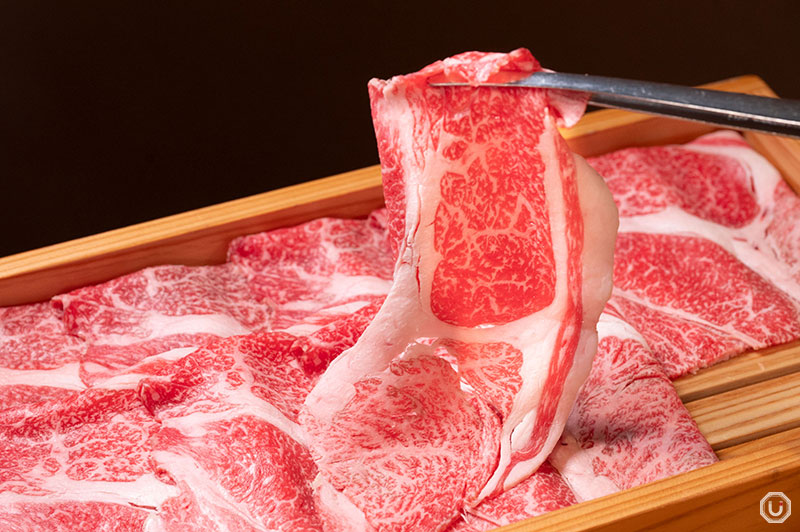
Since the beef is thinly sliced for shabu-shabu, it only takes a few seconds to cook through.
Once the color of the wagyu changes, it’s ready to be removed from the dashi.
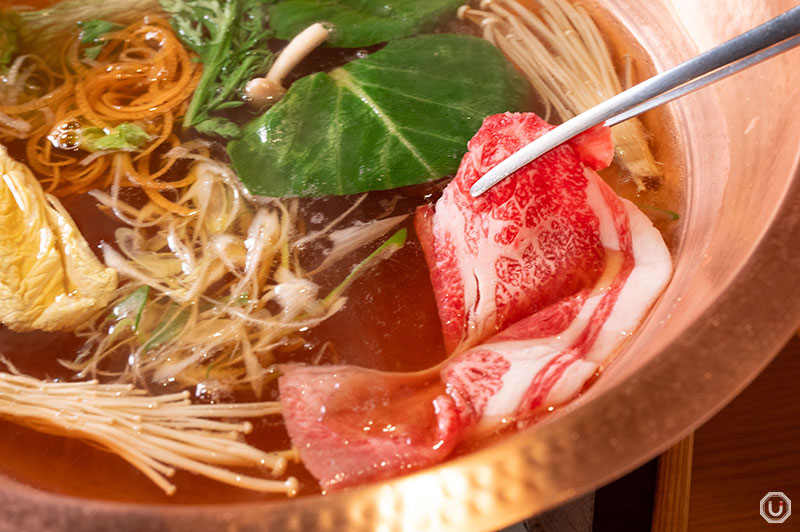
Additionally, because the dashi brings out the deliciousness of the ingredients, there’s no need for dipping sauce.
Enjoy the enhanced flavor brought out by the infusion of umami from the ingredients into the broth!
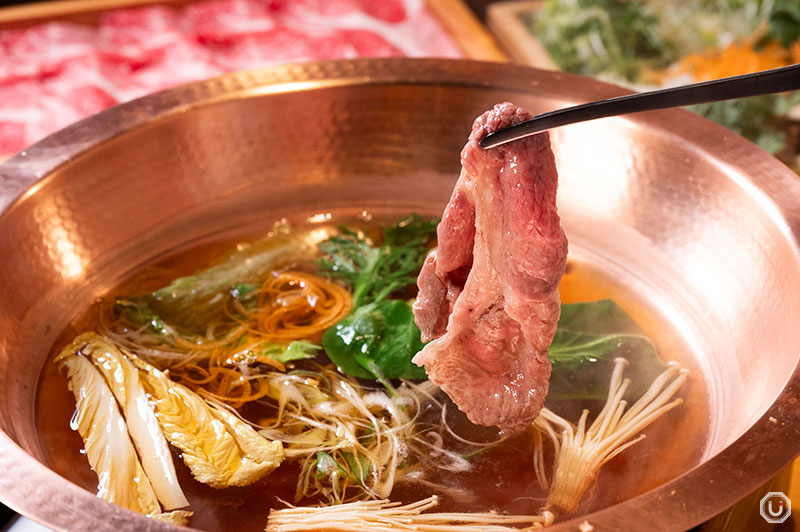
Dashi is an all-purpose seasoning!
At Okaka Shinjuku, dashi plays a significant role in dishes other than shabu-shabu.
For the restaurant’s chawanmushi (savory egg custard), dashi made by soaking kombu in water for over one night is used. Then, dashi extracted from seafood and shiitake mushrooms is added.
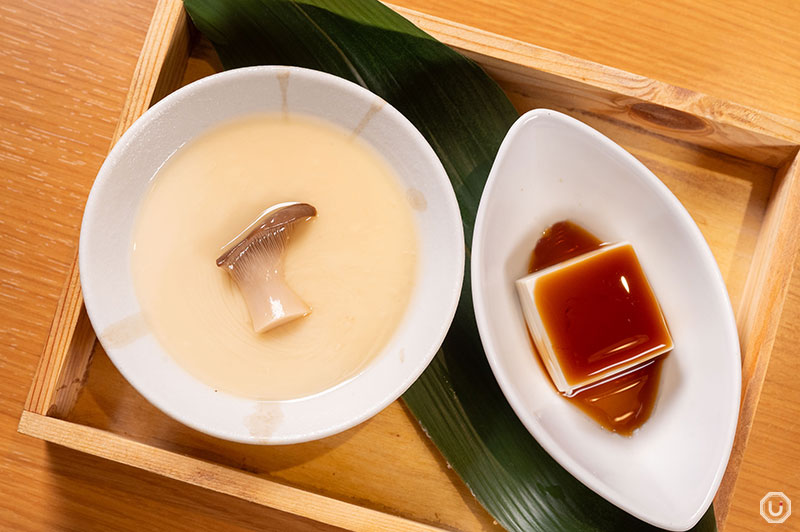
Chawanmushi (left) and Okaka Shinjuku’s Homemade Tofu (right)
The eggs have a silky-smooth texture and a delicate mouthfeel.
Meanwhile, the umami from the seafood in the dashi and the sweetness from the shiitake mushrooms gently spreads on your palate, creating a gentle flavor.
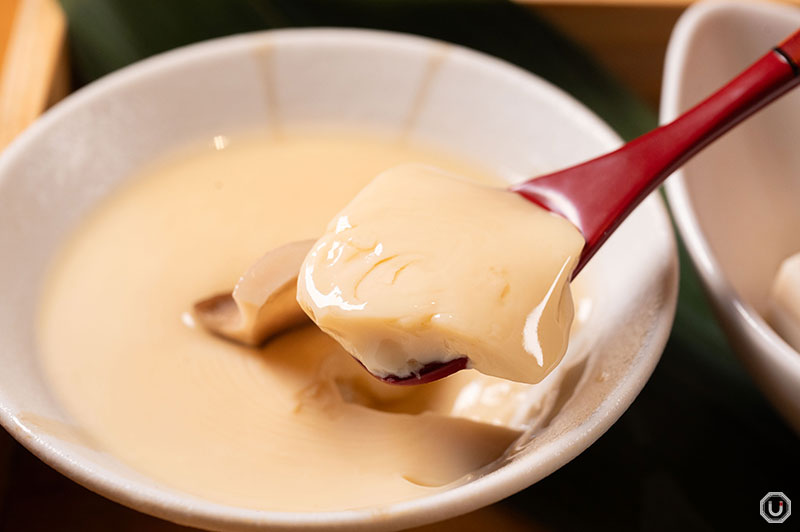
Dashi is also generously used in the restaurant’s dashimaki tamago (Japanese rolled omelet).
Adding green onions and grilling gives it a crispy texture and a refreshing aftertaste. When you take a bite, the dashi oozes out.
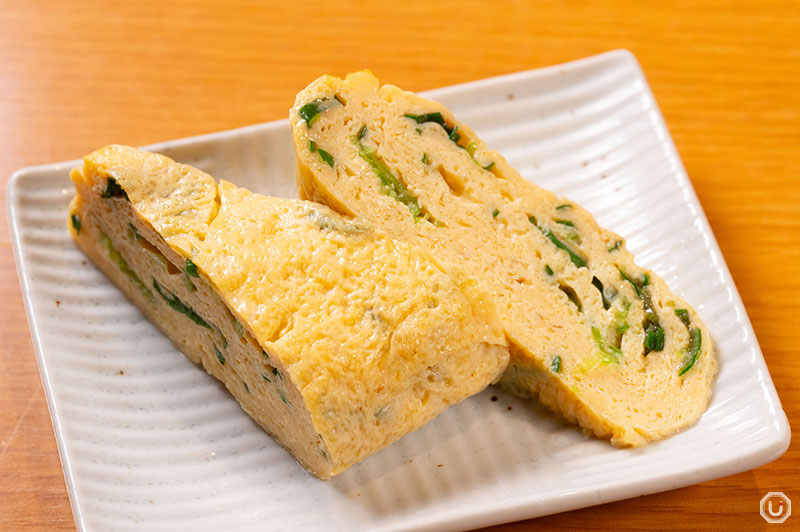
Both chawanmushi and dashimaki tamago are simple dishes made with mainly just eggs and dashi. However, what really gives them their depth of flavor is the dashi.
You could very well say that dashi is a versatile seasoning that adds depth and aroma to dishes.
Reuse your bonito flakes after making dashi
The bonito flakes served at Okaka Shinjuku aren’t just used for making dashi.
In the bite-sized onigiri included in the course, they use what’s known as dashigara, which are bonito flakes left over after making dashi.
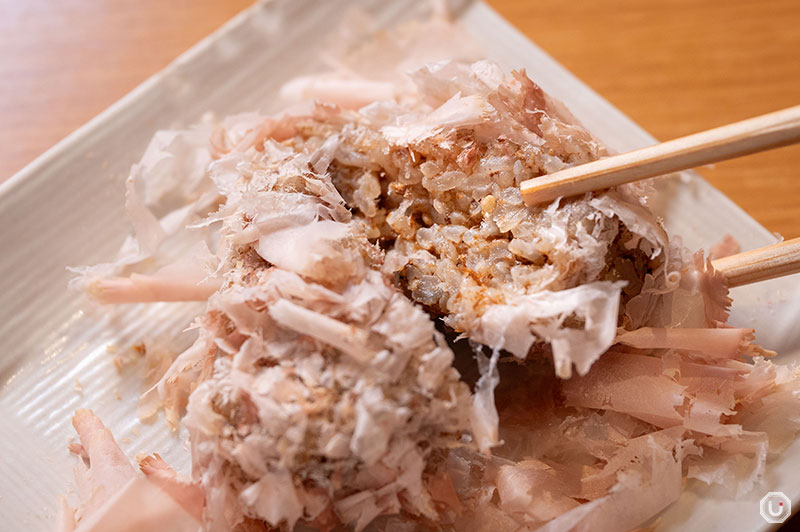
The bonito flakes simmered from making dashi have a mellow saltiness. Plus, they retain a light umami flavor.
By mixing them into white rice, they add flavor and play a significant role as a splendid ingredient! It’s an eco-friendly ingredient that can be effectively utilized instead of simply being discarded.
Experience Japanese culture through dashi, an essential ingredient to the country’s cuisine
While dashi is considered a fundamental element of Japanese cuisine, it doesn’t often take center stage in dishes.
In that regard, Okaka Shinjuku is a concept-driven restaurant that focuses on savoring dashi. The dishes here allow you to enjoy the deliciousness of dashi broth and its appeal in cooking.
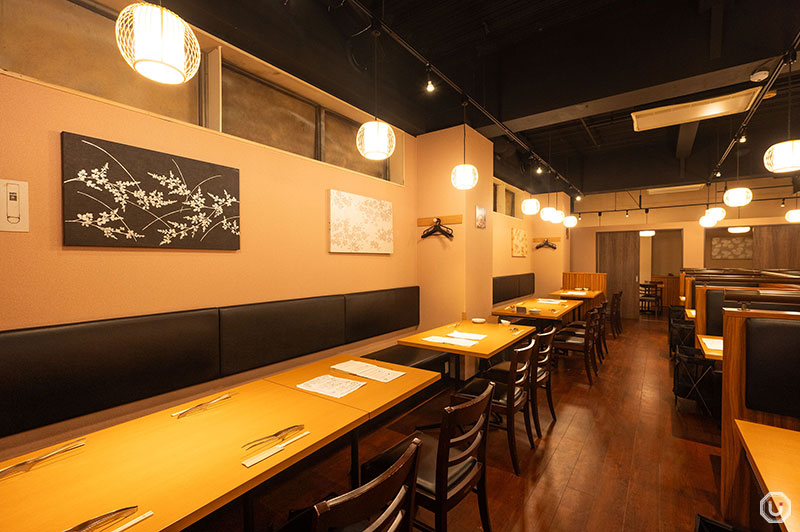
Okaka Shinjuku’s interior
When you visit Okaka Shinjuku, be sure to savor each dish while being mindful of the flavor of dashi in them.
You’ll likely become captivated by this delicious broth, which elevates the taste of the dishes with its refined depth and richness.
Information
| Store name | おかか 新宿 Okaka shinjuku |
|---|---|
| Address | Shinjuku Square Bldg. 8F, 1-16-3 Kabukicho, Shinjuku, Shinjuku-ku, Tokyo
|
| Access |
Seibu-Shinjuku Station 3-minute walk from Seibu-Shinjuku Station Main Exit
Shinjuku Station(SJK) 5-minute walk from Shinjuku Station East Exit
Shinjuku-Sanchōme Station 5-minute walk from Exit B8
|
| Phone number | 03-5252-5547 |
| Reservations | Accepted Phone, Tabelog, GURUNAVI, Hot Pepper Gourmet, Hitosara, OZmall, Ikyu Restaurant, Reserve with Google |
| Payment |
|
| Service charge/Table charge | Service charge (including otōshi) 500 JPY (tax included) when only ordering à la carte items |
| Hours | Mon- Fri. 17:00-23:00(last order food 22:00, last order drinks 22:30) Sat-Sun. & nat’l holidays 12:00-23:00(last order food 22:00, last order drinks 22:30) |
| Closed | No fixed holidays Unscheduled holidays |
| Seating | 96 seats 88 table seats, 8 private dining room seats |
| Smoking | All seats are non-smoking |
| Official website | https://www.syabusyabu-okaka.jp/stores/shinjuku/ |
| Other information |
|
※Menu contents, prices, store information, etc. are current as of March 2024.
